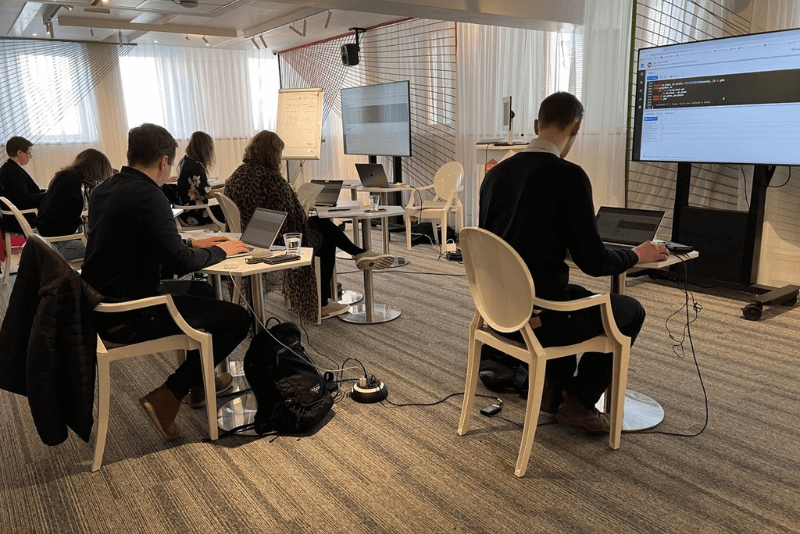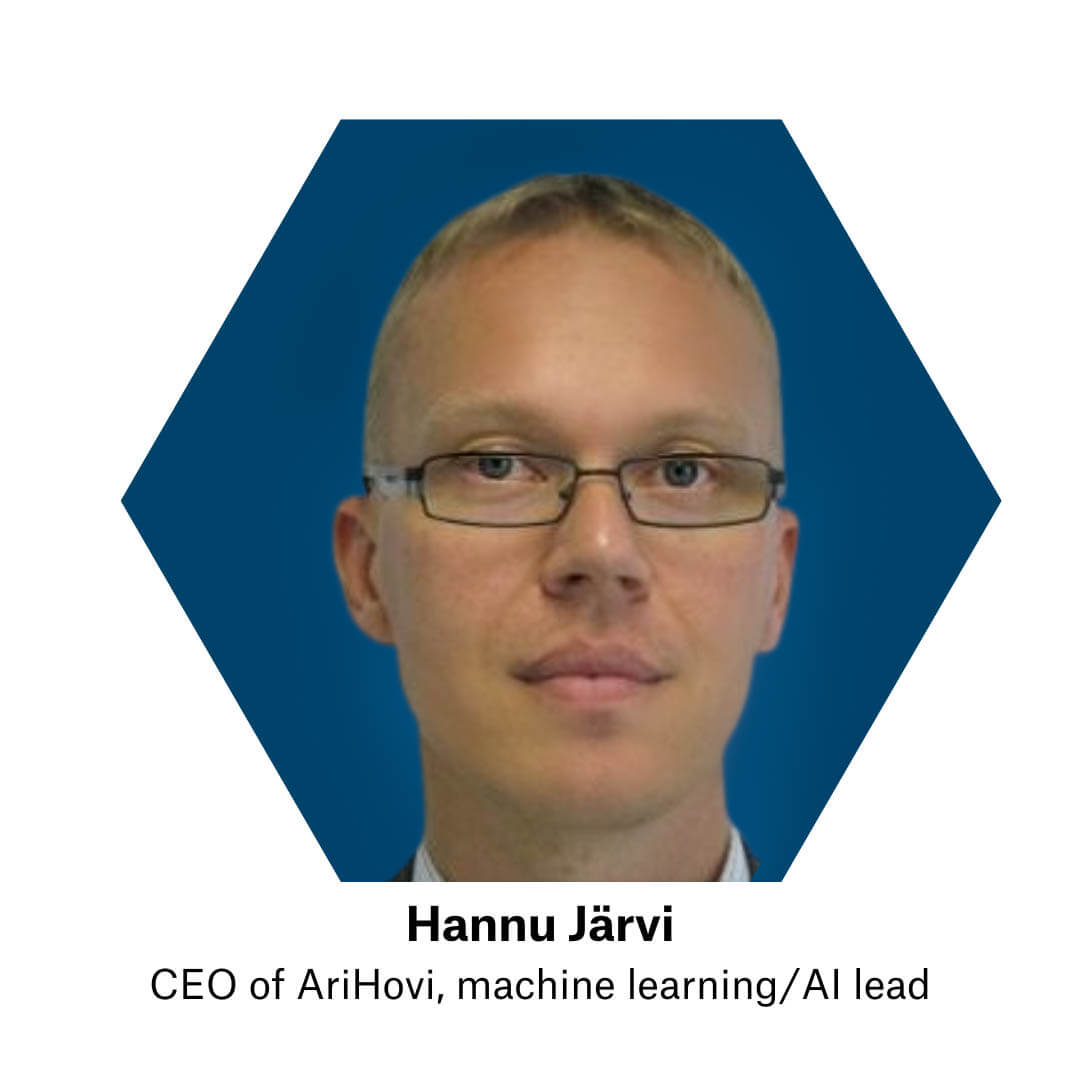Why is having in-person trainings and events important? Hannu Järvi, CEO of Ari Hovi and the head of machine learning and AI, recently organized a live training at HUONE Helsinki after two years of only online trainings. In this interview, Hannu shares his experience, learnings, and tips for future trainings!
In this article, you will
- Learn about the importance of in-person live training compared to remote online trainings
- Learn about the benefits of the surrounding environment for a successful training
- Hear comments from the training attendees at HUONE
- Learn more about Ari Hovi and Hannu Järvi
Ari Hovi has been a loyal customer of HUONE and has been organizing trainings in the venue regularly since 2019. Ari Hovi provides high-quality trainings in AI and data digitalization. The courses are about helping companies how to utilize data more efficiently through trainings and consulting. Ari Hovi is well known for its international trainers and its high-profile customer base, some were among the largest listed companies in Finland and IT consulting companies. Trainings are organized as 1 to 3 days of open trainings, as well as customized trainings for their clients.
How was it to come back to live in-person trainings after such a long break?
It was purely amazing. When we are face to face, participants are much more engaged and more discussions happen throughout the training compared to online setting.
Since the start of the pandemic, all trainings have been switched to online. Us, trainers had to adapt quickly and work in a completely different environment. Participants, also, accepted the new way of learning well. However, pedagogically, remote training is harder, since you have to think of alternative ways to conduct the training. Now, after a long break, it was truly rewarding to conduct trainings physically on-site.
Compared to online training, interactions are more meaningful in live training. It is also much easier to have discussions about the challenges. You can easily carry on conversations face to face with other participants or even have a one-on-one talk with the trainer.
What’s the biggest difference between live in-person training and online trainings?
During the two years of remote work, we have invested a lot in the pedagogy of the trainings. In online trainings, the so-called ‘red thread’ of the training plays a very central role; which means you need to think really carefully the flow of the sessions to make sure everyone can follow. Obviously, this is also beneficial for live trainings. However, in live in-person trainings, it is much easier for a trainer to observe and ensure everyone is following fully. From participants’ expressions, you can read when something is challenging so you take more time, or when you can pick up the speed.
In my opinion, the biggest difference between live and online trainings is definitely the engagement level between a trainer and participants.
In live trainings, the level of interaction is much more intense and powerful. You will get the feedback right away and can see the expressions of participants. Hence, you are able to react immediately accordingly, faster, and better than in an online setting.
 (AriHovi’s training in Spectrum-room, HUONE Kamppi)
(AriHovi’s training in Spectrum-room, HUONE Kamppi)
How do you define successful training?
In successful trainings, everyone has learnt what one originally had intended to learn. In addition, the learning process has been a pleasant one.
My personal tip for a successful training is to properly think the content and flow of the training through, also pedagogically. The very first thing to consider is what is it that you want the participant to learn and why. Only after this, you start to think about how to practically conduct the training so that a successful outcome is ensured.
Benefits of the right environment in trainings
Both in online and live trainings, surroundings matter. The environment has a significant effect on participants’ behaviour and the end results of the training itself. When choosing a training venue, it is important to think of the desired goal of the training. The meeting space should always support the goal of the day.
“HUONE works perfectly as a training space and participants were happy.”– Hannu Järvi
When choosing a space, the most important element for us is the location; participants have to be able to arrive easily. In addition, the booking process needs to be smooth, reasonable price, and everything as a whole in the big picture to function so well, that participants’ learning process can be a pleasant one. All these will play a role also in achieving the goal of the day.
Comments from the training participants at HUONE Helsinki
Feedback from the day was overall positive! It was great to see that also participants were happy to have live training. From the comments, you can see how meaningful this was.
- “It was truly great to get out from the home office for a day and do something completely different. Live training instead of a Teams-training was really the right way to go.”
- “Communicating with the trainer is definitely easier in the live in-person training. In addition, Hannu Järvi was truly a great and logical trainer. I amazed myself at how well I managed with the training assignments based on everything we learned.”
- “I believe I learned more in this live training than in online training.”
- “In-person training is definitely a better way to attend trainings, because at home, you are much more likely to get distracted. You might pick up some emails or start multi-tasking with training and Teams-messages. When in live training you focus really on the training and its content.”
- “Huge thanks to the organizer for all the materials and training, also to HUONE Helsinki for the amazing setting. Happy spring!”
- “HUONE is a great place! Worked well as a training space. Welcoming atmosphere, friendly customer service, good food, and servings”

Hannu Järvi, CEO of AriHovi and Machine Learning/Artificial Intelligence lead, started to work with AI first in the mid-90s. He has a clear understanding of the real facts vs. ‘commercial speak’ in AI. Hannu has successfully trained over 1000 individuals over 100 trainings.
Hannu has helped both small and large companies with AI, for example, a central hospital’s management team and Finland’s top 10 listed company’s strategic leaders. He has trained diverse groups from AI beginners to doctors in machine learning. He also trains on the topic of SQL and data modeling.





